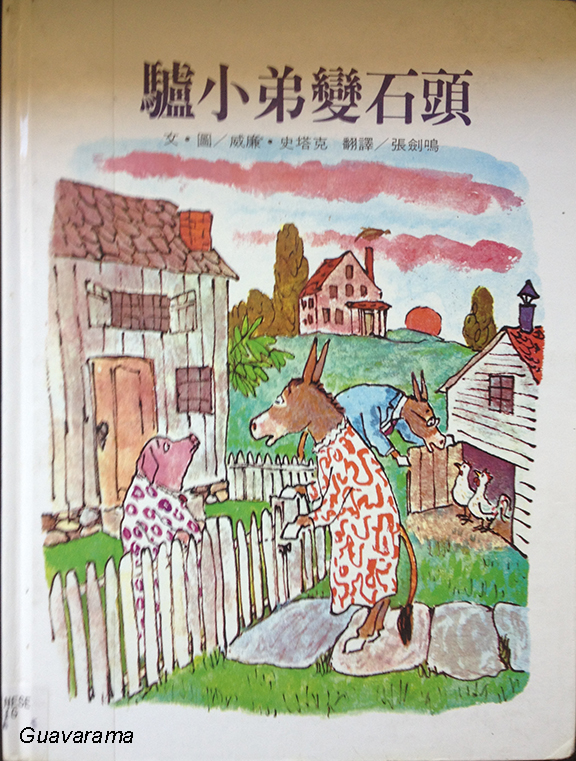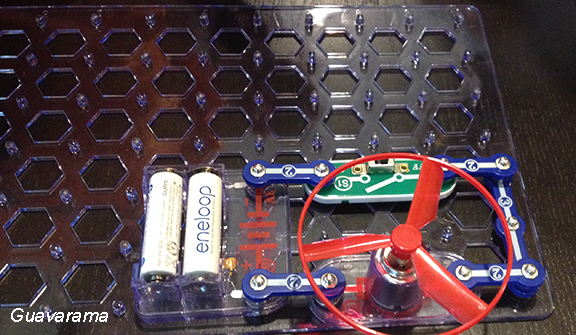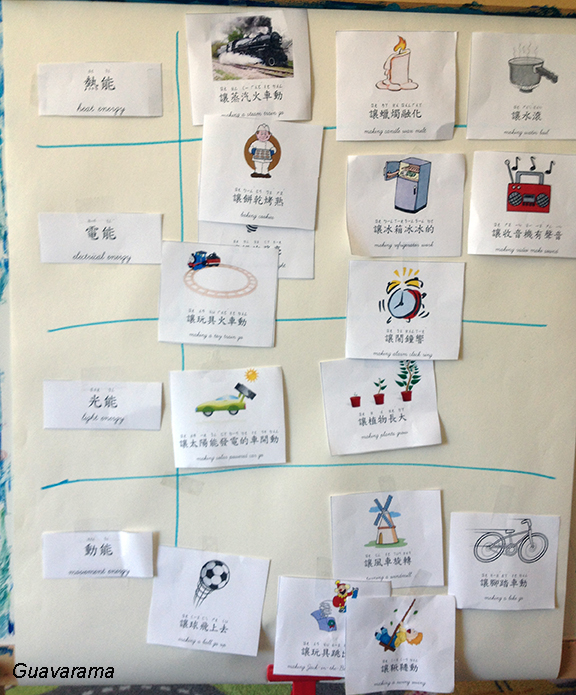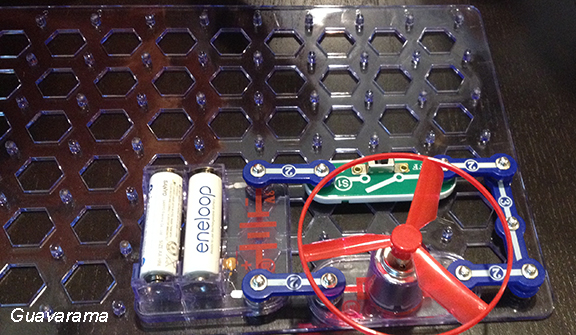Age: 5 and almost 8
Presentation: Introduction to Energy
We had our first ‘co-op’ teaching session yesterday with another family who is also homeschooling in Chinese. It was super fantastic. The best thing was that I didn’t have to plan it!
Okay, I sort of kid. What we’re doing is following the Building Foundation for Scientific Understanding book. It’s a curriculum that very much mirrors the Montsesori curriculum (at least in the beginning sections I’ve seen) but has this super cool chart that tells you exactly the order of your presentation. I use it in conjunction with my album.
Our co-op is still in the midst of being organized. But I’m hoping we can swap so that one person teaches science and the other math or history. We can get together for the lessons and then do a bunch of followup activities at home. Since my friend is not necessarily doing Montessori, but is open to her child being taught in that way, this gives us the flexibility to follow up however we like.
Energy
Our lesson was Introduction to Energy it’s a requirement for the lesson on “Plants vs. Animals”, which is what I actually wanted to teach the kids. There are more than 4 types of energy but to make it simple, we only introduced heat energy, light energy, electrical energy, and movement energy. I think energy is defined here as what gives something the power to move or change state? I don’t even remember because I wasn’t the one teaching.
The Montessori albums I have have no sections on Physical Energy. But my Montessori homeschooling friend lent me a book titled “Nurturing the Young Scientist: Experiences in Physics for Children“. It has a section on introducing energy. Looking through the activities, we decided that introducing electrical energy looked the most fun for a group setting.
We also consulted the BFSU book for what the intent of the lesson is. I made up a deck of bilingual sorting cards and gave it to my friend.
What We Did
My friend did such a great job with the lesson. And I learned a bunch just watching her in how to make a lesson relevant and fun. But me with my big mouth had to keep interjecting. I need to remember next time not to do that. It totally takes away from the teacher’s authority when there are two people talking and the kids don’t know who to listen to.
She started by reading a picture book about a donkey who used a small magical rock to turn himself into a big rock.

She then brought out a small rock and a lightbulb. She had the children hold the rock in one hand and the lightbulb in the other; then asked them to try and turn the lightbulb on just like the little donkey does in the book, by holding the rock. The kids had a really good time yelling 不可能!(It’s impossible!). I would have thought it’s way too immature for the children and they would just say it’s impossible. But Thumper was the most enthusiastic one trying to turn the lightbulb on. They danced around the room. Even put on a magician’s hat and used a wand.
Of course the follow up question was: “So it’s not possible? Then what do you think is possible to make a lightbulb turn on?” She also brought out a battery and we actually had a lively discussion (you could practically see those little brains thinking hard) about where electrical energy come from in Nature and where do you think a battery gets its electrical energy from? Thumper said that there is a big house that collects electrical power from thunder. So as a follow up we’re going to find a video on battery factory.
Next up, we did our sorting/categorizing exercise. Thumper had no trouble with it because she’s actually kind of familiar with the basic concept. I think she’s ready for the bigger questions involving energy. The other child in the co-op had no problem either except for a 1-2. Astroboy, who is the youngest, had to be guided. You could say actually, this lesson was actually right at his level.
My zhuyin teacher has been telling me that for a lesson where the children’s level are so different, there’s nothing you can do on the lesson level though you do try to challenge them still by asking different types of questions. The important part is just giving them level-appropriate follow-up work. So this will be my homework next week as I prep.
Lastly, thanks to my friends’ suggestion, we brought out the snap circuits set and the kids had a good time building some circuits the next hour. The second project had a propeller which will continue turning even when you turn the electricity off. We used it as an example to illustrate two energies: electrical and movement. I don’t know if my physics is right. But the propeller had movement energy stored so even though the electrical energy was turned off it could spin a bit. And they loved this project because the propeller flies off! They also started getting into the harder circuits by the end where you can think about how the circuits flow and how sometimes things only act as a conduit and how electricity can be reduced by a resister.
The Snap Circuits Jr. SC-100 Electronics Discovery Kit says it’s good for 8 and up. But Astroboy, at 5, had no problem with it after some guidance from me for the first 2 projects. It’s got about 100 projects in our first set. And there are supplement circuit sets too. One is a green-energy one which will talk about other kinds of natural energy. So that’s next on my to-buy list. Maybe Christmas present from aunts and uncles?
We followed up with some playdate time. All in all a pretty successful class time and I can’t wait to see what my friend comes up with for our next lesson on Solids, Liquids, and Gas.
Chinese
- heat energy 熱能
- electrical energy 電能
- light energy 光能
- movement energy 動能



